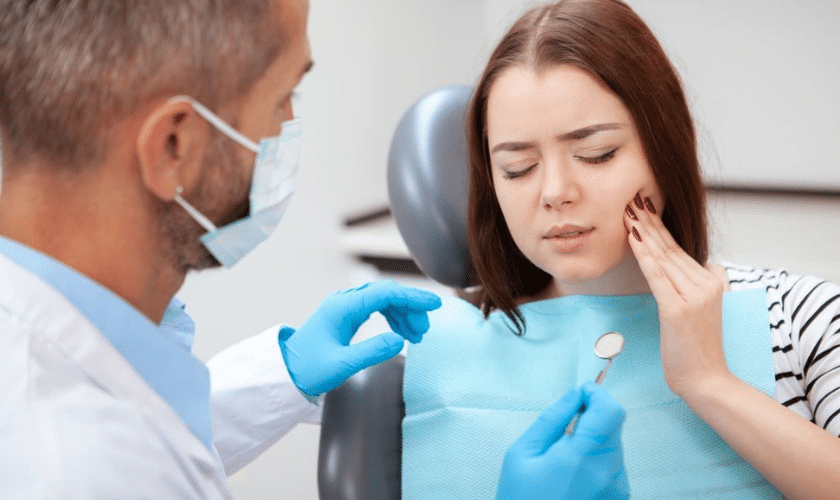Emergencies can strike when you least expect them, and dental issues are no exception. Knowing how to handle common dental emergencies is crucial for alleviating pain and preventing further complications. In this guide, we’ll walk you through some prevalent dental emergencies and provide tips on how to manage them effectively.
Types of Common Dental Emergencies
Sudden and severe toothaches are another common dental emergency that can disrupt daily life. Causes may include tooth decay, abscesses, or gum infections. Immediate steps to alleviate pain include rinsing the mouth with warm water, flossing to remove potential debris, and using over-the-counter pain relievers. However, seeking professional dental care is imperative for a thorough examination and targeted treatment.
Avulsed teeth constitute a critical dental emergency, especially when dealing with permanent teeth. Unlike primary teeth, which are not reimplanted, immediate action is crucial. The optimal approach involves swift on-scene reimplantation (Frichembruder et al., 2020).
Dental trauma is a prevalent issue affecting both adults and children, often resulting from physical accidents or injuries during sports activities. These incidents can lead to various types of injuries, such as fractures, lateral or extrusive luxation (the loosening and displacement of a tooth), intrusion (vertical displacement into the alveolar bone), and avulsion. It means complete displacement of the tooth from its socket (Douglass & Douglass, 2003).
Infections within the oral cavity can escalate rapidly and lead to severe complications. Symptoms may include swelling, pain, and pus discharge. Quick action involves maintaining good oral hygiene practices, such as regular brushing and flossing. However, consulting a dentist promptly is essential for proper diagnosis and the prescription of antibiotics if necessary.
A dental emergency requires prompt action to address immediate concerns, aiming to alleviate pain, infection, or aesthetic issues in the oral cavity. The dental emergency service is dedicated to caring for patients facing oral issues that significantly impact their daily lives or the proper functioning of their organs. A fracture, characterized by a disruption in any dental component, can lead to the loss of tooth structure. This type of damage can be categorized based on the affected tooth segment: crown, crown-root, and root fractures (Loureiro et al., 2019).

Immediate Actions for Dental Emergencies
If the tooth appears visibly contaminated, a gentle rinse in cold running tap water is recommended before reimplantation. It is essential to handle the tooth with care, avoiding any contact, rubbing, or cleaning of the root to preserve periodontal ligament fibers and enhance the likelihood of successful replantation.
In dental emergencies, knowing basic first aid measures can make a significant difference. Keeping a dental first aid kit with essentials like gauze, a cold compress, and an over-the-counter oral analgesic can provide immediate relief. However, it is crucial to remember that these measures are temporary, and professional dental care is essential for a comprehensive solution.
Following reimplantation, it is imperative for the patient to seek professional dental care for splinting and antibiotic prophylaxis promptly. Traumatized teeth necessitate ongoing follow-up with a dentist for a comprehensive diagnosis and long-term care. Potential long-term consequences encompass pulp death, root resorption, and displacement or developmental defects in permanent tooth successors (Frichembruder et al., 2020).
In the aftermath of dental trauma, all patients must seek follow-up care with a dentist for a comprehensive diagnosis and long-term management. The potential long-term consequences of such trauma encompass pulp death, root resorption, as well as displacement or developmental defects in the permanent tooth successors. Taking proactive steps to address these issues can significantly contribute to maintaining optimal oral health in the face of dental trauma (Douglass & Douglass, 2003).
It is crucial to thoroughly assess the extent of the fracture across different layers of the tooth. In cases where the fracture involves the alveolar process, it is termed a dentoalveolar fracture. Swift and appropriate intervention is key in managing dental emergencies and ensuring optimal oral health (Loureiro et al., 2019).
Navigating dental emergencies requires a combination of awareness, preparedness, and prompt action. From fractures to sudden toothaches and infections, understanding the nature of the emergency empowers individuals to take the right steps in managing and seeking appropriate professional care. Remember, in the realm of oral health, quick and informed decisions can make all the difference in preserving your smile. Stay informed, stay prepared, and prioritize your oral well-being.
Reference List
– Frichembruder, K., Mello dos Santos, C., & Neves Hugo, F. (2020). Dental emergency: scoping review. PLoS One, 15(2), e0222248.
– Douglass, A. B., & Douglass, J. M. (2003). Common dental emergencies. American family physician, 67(3), 511-517.
– Loureiro, R. M., Naves, E. A., Zanello, R. F., Sumi, D. V., Gomes, R. L., & Daniel, M. M. (2019). Dental emergencies: a practical guide. Radiographics, 39(6), 1782-1795.



